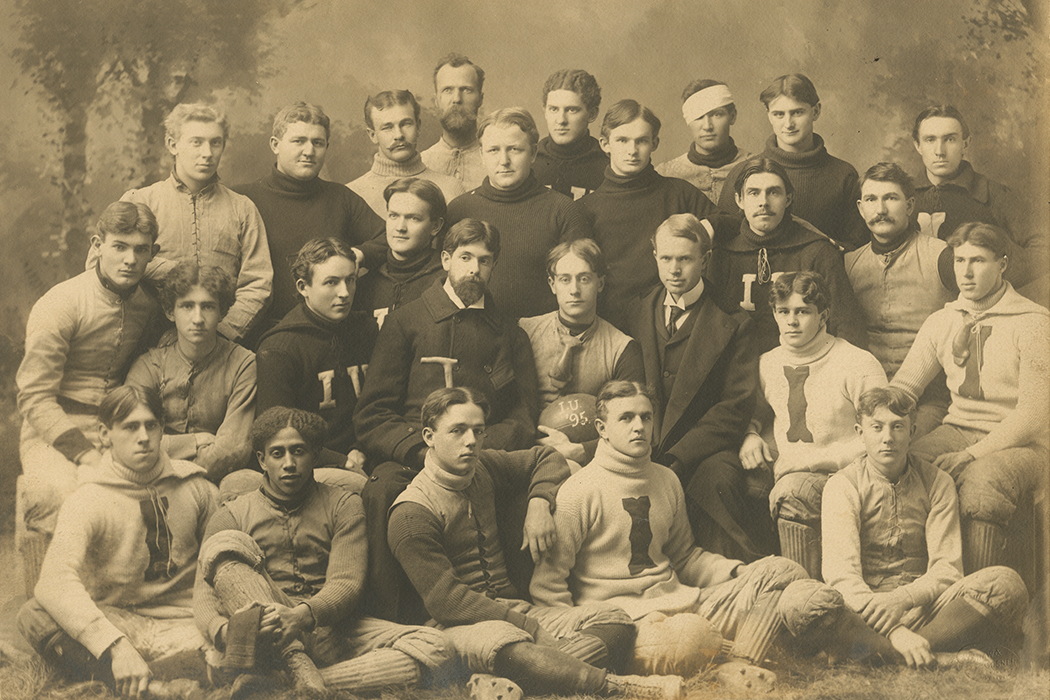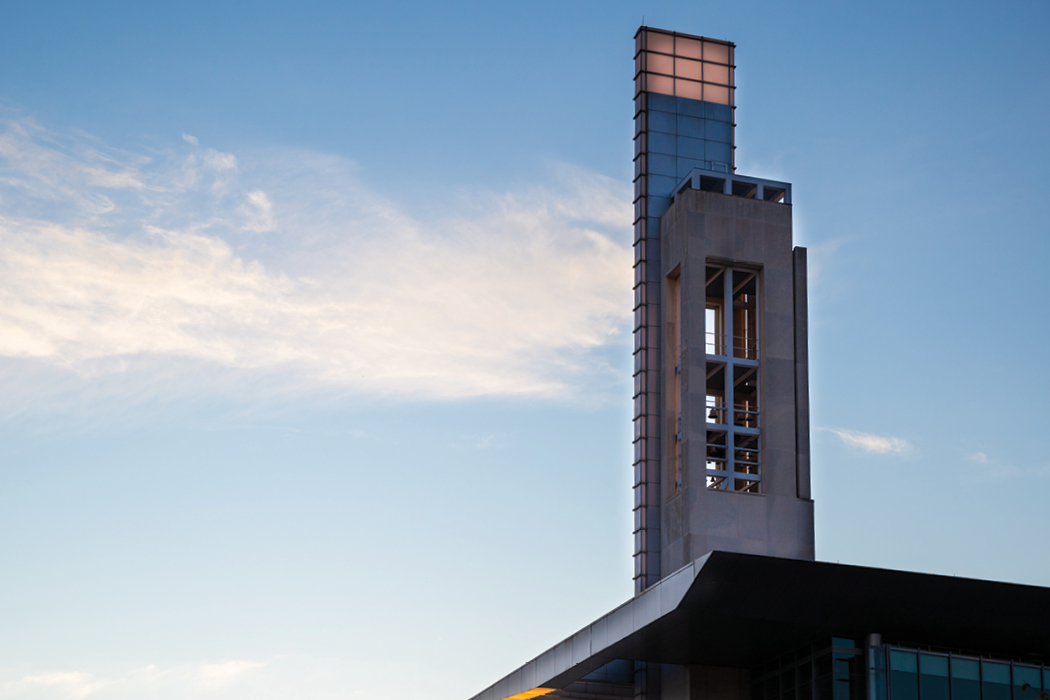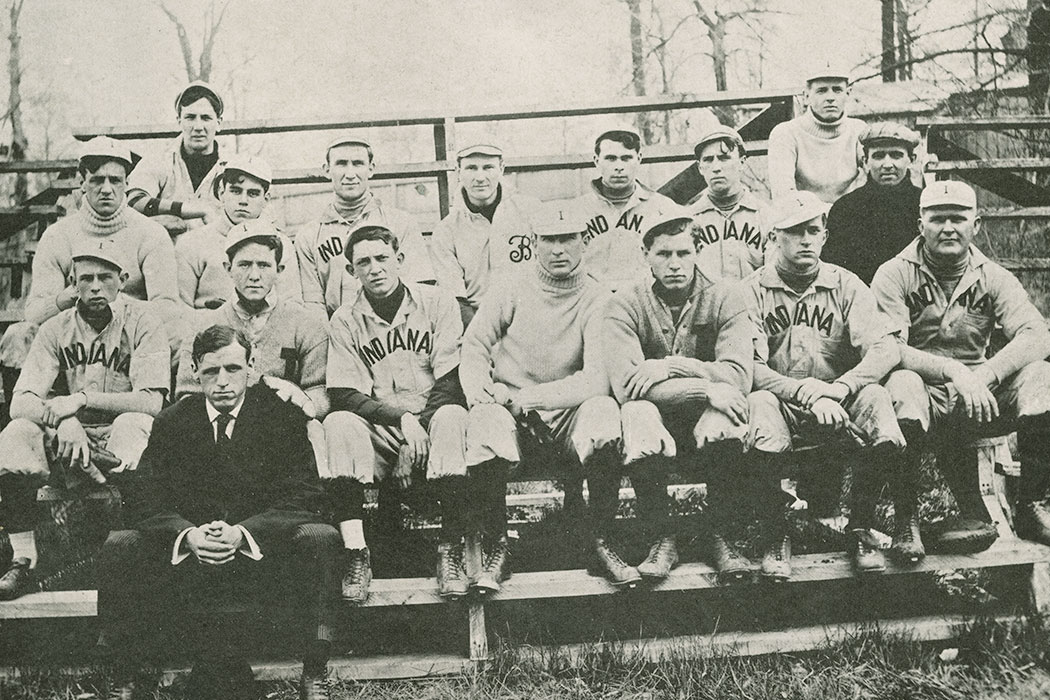Myths of IU: Bloomington’s Sinking Library

The main library (rededicated as the Herman B Wells Library in 2005) was dedicated in October of 1970, and almost since the building’s construction was announced, rumors questioning its ability to bear the weight of the books it contains (currently 4.6 million volumes) have persisted.
The first known account of the legend of the sinking library was reported in the March 9, 1968, issue of the Indiana Daily Student, where, as with every account since then, the rumors were strongly refuted by those involved.
The article included a response from Joseph Hawkins, the building project manager: “I heard a rumor last week that the new library was supposed to be sinking into the ground. It’s impossible. The building is sitting on solid rock. Last summer about 14,000 cubic yards of stone were removed so we could start construction. I don’t see how the building could possibly be sinking.”
Despite Hawkins’ early rebuttal of the idea, alumni and visitors have continued to share the story. University tour guides often tell the legend to visitors and on student tours; it also appears on many websites and blogs about IU and Bloomington.
And, in 2015, the myth was shared as an April Fools’ Day joke by IU Bloomington’s Twitter account.
It appears that the consistent denial of the legend is relatively unimportant compared to what makes it compelling for those who repeat it.
In a 1996 interview, student Julie Smith said, “Come to think of it, I can’t even remember how I heard this story. Maybe it’s not true at all, but it’s definitely something the older students pass onto the freshman to keep it alive.”
Similar legends have been told about libraries across the country—mostly university libraries, although some public institutions have also been associated with “that sinking feeling.” It’s not clear exactly when or why these legends started. Snopes.com, a website developed as “the definitive Internet reference source for urban legends, folklore, myths, rumors, and misinformation,” reported accounts of similar narratives going back to the late 1970s, but the Wells legend was first reported almost a decade earlier, suggesting the story is older than initially thought.
Despite the widespread nature of the legend, there are only two verified accounts of a sinking library, neither of which was due to the unexpected weight of the books. The first was in Sweetwater County, Wyoming, where a library was built in 1977 on top of a cemetery and proceeded to sink. The second was the Babbidge Library at the University of Connecticut, built in 1978, which began to collapse internally due to people involved in the construction cutting costs by watering down the concrete.
While these events may have reinforced fears about libraries sinking into the ground, they happened after the IU story had become popular, so it’s unlikely they are responsible for the legend’s staying power.
Some have suggested that the sinking library is part of a larger category of narratives about “the architect/engineer’s blunder,” a tale type with a much longer history. These “blunder” narratives are presumed to provide the teller and audience an enjoyable sense of superiority over the supposed expert who makes an easily avoided mistake. This may also be true in the case of the sinking library legend, but folklorists and other collectors have suggested additional possibilities for why this version of the story has such staying power.
There are other types of legends about universities’ follies with buildings, suggesting that the library legend may result from a frustration with university bureaucracy and an expectation that big institutions make silly mistakes. Other theories include that the building sinking under the weight of the books acts as a metaphor for the crushing weight of the knowledge students are expected to absorb and retain. In the case of the Wells Library, not only do the rumors about it sinking under the weight of its books predate both recorded cases of sinking libraries, they predate the building’s dedication. Despite the more than 40 years of project managers and university representatives denying the claims, and the lack of actual accounts of sinking libraries, the legend has persisted and maintained its relevance to this day.
This article originally appeared in the August 2019 issue of 200: The IU Bicentennial Magazine, a special six-issue magazine that highlights Bicentennial activities and shares untold stories from the dynamic history of Indiana University. Visit 200.iu.edu for more Bicentennial information.
Tags from the story
Written By
IU Office of the Bicentennial



